The Galileo Energetic Particles Detector
Galileo EPD Handbook
Chapter 1. Instrument Summary
Mechanical System Overview
Source: Ted Mueller; SDO/PAO-0040, Jan. 20-21, 1981
The cruise configuration of Galileo is shown in Figure 1-5. The outline drawings in Figures 1-6 and 1-7 show side and top views of the EPD. The phantom line in Figures 1-6 and 1-7 represents the cover that will be on the EPD during launch. The telescope is shown rotated against the mechanical stop in sector 7. It might be desirable to relocate this starting position to sector 4 to improve the design of the protective cover.
The obscuration drawing in Figure 1-8 shows how the magnetometer canister, the PLS, the boom and the foreground shield obscure the view of the telescope. The obscuration from the rest of the spacecraft could be reduced, if there is an increase in the dynamic envelope due to the change to a Centaur launch vehicle. The foreground shield will be modified, if time allows, so that its support bracket does not obscure the 180 degree end of the LEMMS telescope as shown in the upper portion of the figure. Figure 1-8 was used to illustrate how the foreground shield obscures the 180 degree end of the CMS telescope.
It was suggested that some configuration be found that would allow the radiation sources in the foreground shield to calibrate both the 180 degree end and the 0 degree end of the CMS telescope.
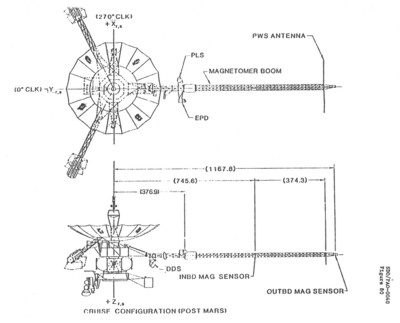 |
Figure 1-5. Cruise configuration post-Mars. Note: Main antenna did not deploy as shown. |
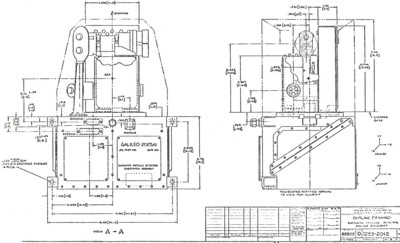 |
Figure 1-6. EPD, side view. (Modified post-Challenger.) |
 |
Figure 1-7. EPD, top view. (Modified post-Challenger.) |
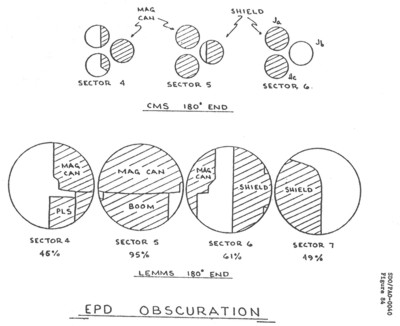 |
Figure 1-8. EPD obscuration. |
Figure 1-9 shows the single surface micrometeoroid protection for the telescope. Extra weight has been allocated by JPL for this protection.
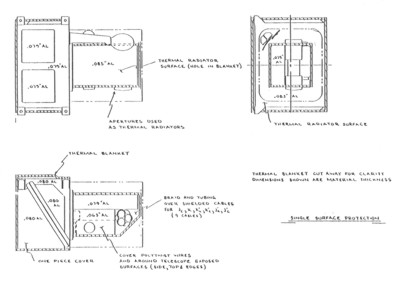 |
Figure 1-9. Telescope protection. |
Figures 1-10 and 1-11 show post-Challenger EPD instrument configuration and rework.
 |
Figure 1-10. Post-Challenger EPD instrument configuration and rework Source: Critical Design Review, Dec. 1987. |
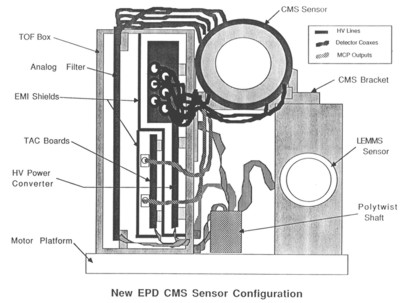 |
Figure 1-11. Post-Challenger EPD CMS sensor configuration. Source: Critical Design Review, Dec. 1987. |
Return to Galileo EPD Handbook Table of Contents Page.
Return to main
Galileo Table of Contents Page.
Return to Fundamental
Technologies Home Page.
Updated 8/23/19, Cameron Crane
QUICK FACTS
Mission Duration: Galileo was planned to have a mission duration of around 8 years, but was kept in operation for 13 years, 11 months, and 3 days, until it was destroyed in a controlled impact with Jupiter on September 21, 2003.
Destination: Galileo's destination was Jupiter and its moons, which it orbitted for 7 years, 9 months, and 13 days.



